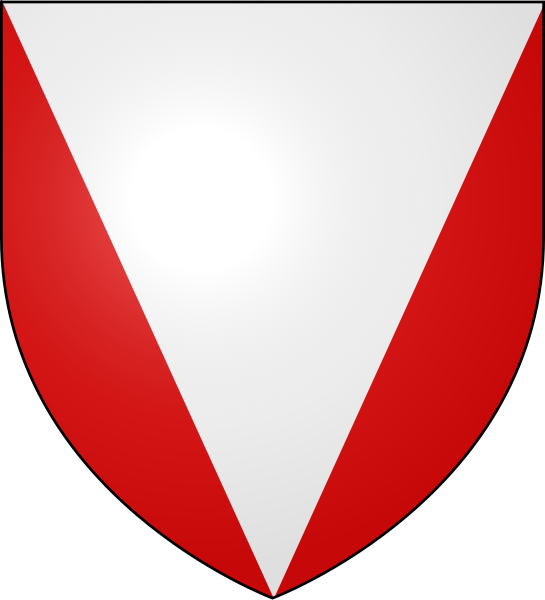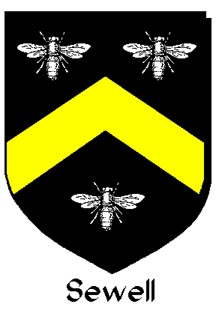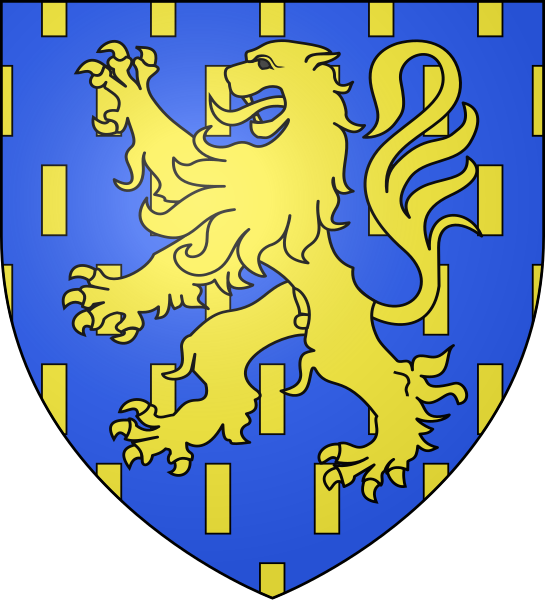Another
class I went to was on the triangular ordinaries and field divisions used in armory-
and how we might not know them as well as we think. These shapes are:
chevrons, piles, chausés and chapés. I should give some definitions before I plunge into the "period practices" the teacher discovered were actually misconceptions.
Chevron: a V-shaped ordinary that, by default, runs between the dexter and sinister edges of the field and points up. The Sewell arms illustrate what is considered a "good" chevron in SCA armory. It runs about half the length of the shield and is what would be considered medium thickness.
Pile: an elongated triangle ordinary extending from the top of the field almost to the bottom. The corners do not reach the corners of the field. In SCA armory, piles tend to be very thick.
Per chevron: a V-shaped field division dividing the field in half. The corners of the V are typically below the per fess line and the point extends almost to the top.
 |
| A pile |
Chaussé (or shod): a field division extending from the top corners of the shield to the bottom point.
Chapé (or caped): a field division extending from the per fess line to the center of the top edge.
Inverted: flipped along its horizontal axis
Throughout: runs the entire length of the field
With the modifications of inverted and throughout, the line between one field division/ordinary and another can get pretty blurry. A pile inverted throughout looks a lot like a field divided per chevron throughout looks a lot like field divided chapé.
 |
| Chaussé |
 |
| Chapé |
A recent precedent stated that a chevron must divide the field approximately in half, be approximately half the height of the shield, and that nothing but small charges should be able to fit above the point (or below if inverted). This ruling was made to standardize how people draw them because there was a lot of variation. What the teacher of this class discovered is that variation is period. She found flat chevrons, tall chevrons, thick and thin ones, and sizeable charges above the points (sometimes as extensions of the point itself). Basically...whatever creates a balanced look given the rest of the charges is what was used. English armory tends to have flatter, thicker chevrons than continental armory. So if you have an English persona, it's more period to do that- otherwise, it's more period to follow the recent precedent more closely. Swiss love throughout per chevron divisions and chevrons.
In regards to piles, she found that thick piles are very late period. For the rest of their history, they're thin. They're also rare and mostly found in English armory. None of the rolls she examined contained piles inverted.
If you're German and have a piece of armory exhibiting a triangle pointing up, you probably have your field divided chapé.











